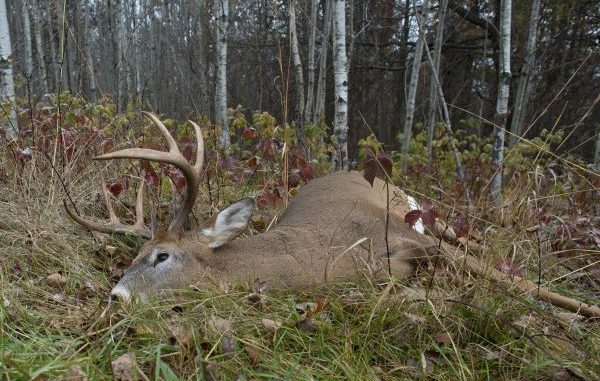
Complaints about doe days, concern over lower deer numbers being addressed, LDWF says
The halcyon days of the 1990s when deer hunters could go out and shoot any deer on any day of the season ended two years ago when so-called “doe days” — hated by many — returned amid biologists’ concerns about falling herd populations and overharvest.
The worries about the number of deer haven’t changed — and neither have the complaints over the dreaded doe days.
So Louisiana Department of Wildlife and Fisheries biologists are considering alternative season frameworks that could mean some combination of shorter seasons and lower limits as early as the 2017-18 season.
“We have long, long seasons with very liberal limits,” LDWF’s Deer Study Leader Scott Durham said. “Is that still appropriate? We don’t have the deer herd we had in the 1990s.
“We’ve been exploring potential ways to have more-conservative seasons so we can drop doe days and yet not have overharvesting.”
Back in the mid-1990s, the harvest in Louisiana peaked at more than 225,000 deer. But LDWF data show the trend since the turn of the century has been one of falling numbers of downed deer — with an estimated 139,900 killed in the 2014-15 season.
That’s a 38-percent drop in roughly a 20-year period.
More immediately, last season’s harvest reflected a 16-percent drop from the 166,200 deer killed during the 2013-14 season.
These numbers come from the annual mail surveys that have provided reliable statistics for decades.
“What about the real numbers?” you might ask.
That sounds like a good question, since last season marked the seventh year of the mandatory tagging and reporting system.
But that system has thus far been a dismal failure, with the vast majority of hunters failing to report their kills.
Durham estimated only about 50 percent of successful hunters bother to call in their kills.
For instance, only 48,298 deer were reported killed during the 2014-15 season — a 5.8-percent decrease from the previous season.
Even when combined with harvest numbers from the WMA managed hunts and DMAP clubs, the total reported deer killed only ticked to 65,081 animals.
Durham said there have to be many more deer killed than that.
“We estimate a couple hundred thousand (hunters), and if only half kill just one deer, that’s 100,000 deer,” he said.
And he knows lots of folks hunting: The LDWF last season issued 273,541 sets of tags, the highest number on record. And those deer hunters spent an estimated 3.8 million days afield, according to the 2014-15 Louisiana Deer Report.
Because so many hunters ignore the mandatory reporting plan, Durham is left to extrapolate what the real numbers he has from the reporting system to develop some sense of what’s going on.
But that’s tough going.
“The hope was that by now we’d have confidence in the reporting data,” Durham said. “I don’t have that confidence right now.
“I’ve got 34,000 to 35,000 guys reporting deer kills.”
Even if there was greater compliance with the reporting mandate, however, Durham said there’s little doubt that kills have dropped because the mail survey is still being conducted and shows the significant decline from the 1990s.
Durham said that, while there could be several reasons for the lower number of kills, he has to be conservative — meaning he has to assume deer herd populations are lower — to ensure the state’s deer herd isn’t overharvested.
Some of the factors Durham said are involved in the falling deer population include loss of habitat as rural areas developed and growing populations of feral hogs.
Forest conditions in pine-dominate regions also have resulted in a reduction of carrying capacity in many areas, he said.
So Durham is left to use the numbers he has to strike a difficult balance between ensuring maximum hunting opportunities and preventing overharvesting.
“Without compliance with reporting, it’s very difficult,” he said. “The easiest thing would be to have direct, accurate reports and not have to deal with all this extrapolation silliness.”
Durham pointed out that no decisions had been made as of mid-August, but he also said making a change for the 2017-18 season means proposals must be made by the fall.


